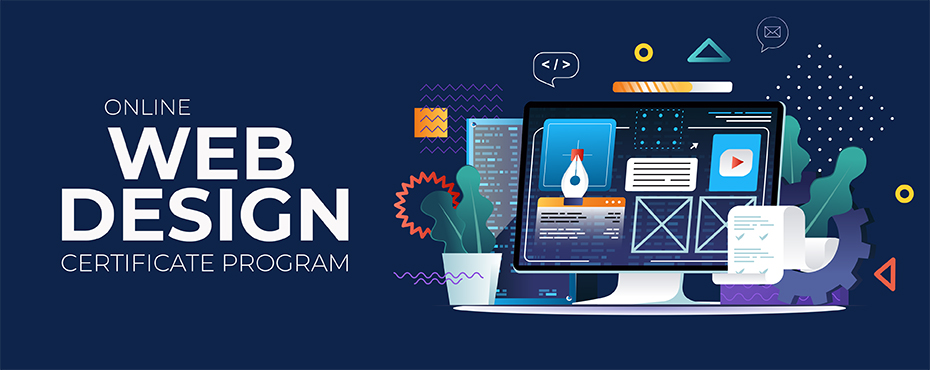Master the Art of Internet Style With These Expert Tips and Techniques
In today's digital age, having a properly designed and visually enticing site is vital for any type of business or private looking to make a mark online. In this discussion, we will discover professional suggestions and techniques that will not only boost the aesthetic allure of your web site yet also boost its functionality and performance. From selecting the right color scheme to integrating effective call-to-actions, these understandings will certainly aid you produce a website that not just mesmerizes your audience yet also drives results.
Selecting the Right Shade Scheme
When choosing a color scheme for internet style, it is essential to think about elements such as brand identification, target market, and overall visual objectives. The colors utilized in a website can substantially affect exactly how customers perceive and communicate with the website. It is essential to select colors that align with the brand name's identification and values. As an example, a technology business may go with a modern and sleek color palette, while a youngsters's brand name may choose brilliant and spirited shades.
In enhancement to brand identity, the target audience ought to additionally be thought about when selecting a color scheme. Different age and demographics might react in a different way to certain shades. As an example, more youthful audiences might be much more brought in to dynamic and vibrant shades, while older target markets might like more soft and sophisticated tones. Understanding the preferences and assumptions of the target audience can assist develop a visually appealing and appealing internet site.
Lastly, the general aesthetic goals of the site should be thought about when selecting a shade scheme. The color scheme must complement the general design and layout of the site, creating a natural and aesthetically attractive experience for users. Whether the goal is to produce a peaceful and calming setting or an energetic and vibrant environment, the color combination must be meticulously selected to attain the desired visual.

Developing User-Friendly Navigation
To improve the individual experience, it is necessary to develop user-friendly and easy-to-navigate food selections for web sites. Easy to use navigation is important for assisting site visitors via the different sections and pages of a web site, enabling them to promptly find the content they are looking for. When creating the navigation menu, simpleness is vital. Avoid cluttering the food selection with also several options, as this can bewilder individuals and make it hard for them to make choices. Rather, emphasis on offering concise and clear tags for each food selection thing, utilizing acquainted terms that customers can conveniently recognize.

Along with clear labels and sensible organization, it is essential to make the navigation menu easily obtainable. Position it in a popular place, such as on top of the web page or in a set placement, to ensure that users can quickly find and access it from anywhere on the site. Take into why not look here consideration utilizing a responsive layout method to make sure that the navigation food selection continues to be functional and easily accessible on various devices, including cellphones and tablet computers.
Including Responsive Design Techniques
In order to optimize internet site capability across numerous tools, incorporating receptive style techniques is essential. Responsive layout is an internet style method that enables web sites to react and adjust to different display sizes and orientations. With the boosting use of tablets and smart devices, it is essential for web developers to produce internet sites that provide an optimum viewing experience for users on all gadgets.
One of the crucial techniques in receptive layout is making use of fluid grids. As opposed to making fixed-width layouts, internet developers create adaptable grids that readjust and resize based on the display size. This guarantees that the web content on the web site remains understandable and obtainable, no matter of the device being utilized.
An additional essential strategy is using adaptable photos and media. By establishing the maximum width of photos and videos to 100%, they will automatically reduce to fit smaller screens. This avoids images from being cut off or misshaped on mobile phones.
Additionally, responsive layout involves utilizing media queries to apply different designs and layouts based on the tool's screen size. This allows web designers to produce a seamless experience by tailoring the presentation of material according to the device being utilized.
Optimizing Website Speed and Efficiency
One vital element of internet design is maximizing site speed and performance. A slow-moving web site can lead to an inadequate user experience, high bounce rates, and lower search engine rankings.
Firstly, optimizing photos is essential for improving website speed. Images need to be properly pressed and resized to minimize their documents size without compromising top quality. This can be done utilizing image optimization devices or plugins.
Another essential factor to consider is site caching. Caching involves visit here keeping static variations of website to make sure that they can be promptly recovered instead of creating them from scrape each time an individual visits the website (Webwize Tomball seo). This significantly reduces packing times and enhances general efficiency
Minifying CSS and JavaScript data is another efficient strategy. Removing unneeded whitespace, comments, and decreasing code intricacy can considerably enhance website speed.
Implementing Reliable Call-to-Actions
Developing influential and compelling call-to-actions is a crucial aspect of effective website design. A call-to-action (CTA) is a punctual or direction that motivates users to take a particular activity on an internet site, such as buying, registering for a newsletter, or calling the company. Carrying out reliable CTAs can significantly improve customer interaction and conversion rates.
To produce compelling CTAs, it is vital to make use of concise and clear language that communicates the worth proposition and advantages of taking the preferred activity. The CTA should be visually prominent on the page, making use of contrasting design and colors elements that attract the individual's focus. In addition, utilizing action verbs and developing a sense of urgency can further enhance the efficiency of the CTA.
In addition, it is essential to place the CTA tactically on the web page. Positioning it above the layer, where it is quickly visible to users without needing to scroll, can considerably raise its presence and click-through rates. It is likewise advantageous to examine different variations of CTAs to establish which ones reverberate best with individuals and drive the highest conversion prices.
Conclusion
In final thought, understanding the art of website design calls for focus to various elements such as color scheme choice, user-friendly navigation, receptive layout methods, internet site rate optimization, and effective call-to-actions. By carrying out these professional tips and techniques, internet developers can produce aesthetically attractive and useful internet sites that boost individual experience and drive wanted actions.
The colors used in a site can considerably affect how customers view and interact with the website.In order to enhance web site performance internet site design across different gadgets, incorporating receptive style strategies is vital. Responsive layout is an internet style technique that enables sites to respond and adjust to various display sizes and alignments. With the increasing use of tablets and smart devices, it is crucial for web developers to develop web sites that supply an optimum viewing experience for individuals on all tools.
